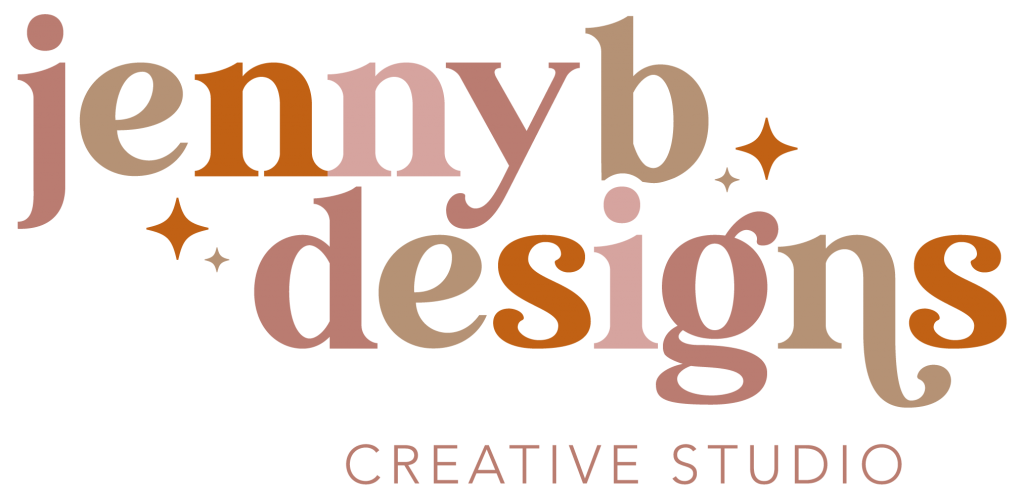Choosing the right platform for your blog can be a super important decision. Two popular options that I see right now are WordPress and Substack. While both are great ways to share your thoughts and opinions with the world, they definitely cater to different needs and audiences.
Table of Contents
ToggleWordPress is my old bestie. It’s been around for more than 20 years and is known for being one of the best blogging platforms out there due to its customizations and flexibility. Substack is a relatively new option and has gained a lot of recognition for its free newsletter top-centric approach and built-in monetization features.
I’m going to share the comparisons between these two platforms and help you determine which one might be the best fit for your blogging needs.
🔥 Jump right to my recommendations!
What is Substack?
While Substack started in 2017, I recall first learning about it when one of my favorite podcasters, Jenny Blake made the transition last year. Since then I have seen more biz owners in my sphere adopt it as their first subscription system and main blogging platform. It’s a popular choice for writers and content creators looking to monetize their work through newsletters. Essentially, Substack is a platform that combines email newsletters with a simple content management system, allowing writers to easily publish and distribute their content to newsletter subscribers anywhere.
Some top features of Substack include:
- Newsletter-centric approach — Substack’s primary focus is on email newsletters, making it super easy for writers who want to build a direct relationship with their audience.
- Built-in monetization — The platform offers easy subscription options, allowing writers to charge readers for access to their content — something that is many times hard to do otherwise
- Community features — Substack offers comment sections and discussion threads to really foster a sense of community and encourage engagement
- Discovery tools — The platform includes ways to help readers discover new writers and content that aligns with their interests. This fosters engagement and readership growth.
I believe that it’s Substack’s simplicity and focus on newsletters that has made it really attractive to journalists, opinion writers, and experts looking to build a dedicated following. However, it’s important to understand that while Substack kills it in these areas, it may not offer the same level of customization full control, or flexibility as more traditional blogging platforms.
What is WordPress?
WordPress has been the main player in the world of blogging and websites for over 20 years. And it is also my website builder of choice for my clients. In 2024, it was reported that over 43% of the websites in the world are built with WordPress.
Some top features of WordPress Websites include:
- Flexibility — WordPress can be used for simple blogs, complex websites, or even e-commerce stores. It’s an all in one solution
- Customization — With thousands of themes and plugins, you can personalize your site to look and function exactly as you want and integrate whatever you’d like to see
- Content management — Easily organize and manage various types of content, including posts, pages, and media.
A WordPress site’s versatility makes it good for a wide range of users, from bloggers to large businesses that publish content everywhere. However, this flexibility can also sometimes mean a steeper learning curve for beginners compared to more simple to use platforms. While a WordPress site offers more control and customization options, it may require more serious technical knowledge, know-how or time investment to fully utilize all of its capabilities.

WordPress blog vs Substack comparison
Comparing both can show key difference and help authors decide which is better. Compare quick results on the chart above. Let’s look at these differences in detail and compare WordPress and Substack. It’s important for both parties to get to know each other better.
What is the difference between Substack vs WordPress?
When deciding between Substack and WordPress, it’s super important to understand how they stack up against each other in a few areas. Here are a few features to highlight:
1. Ease of Use
- Substack: Simple, intuitive interface focused on writing and publishing
- WordPress: More complex with a steeper learning curve, but offers better control and all the functionality
2. Customization
- Substack: Limited design options, focused on content presentation and getting the job done
- WordPress: Extensive customization through themes and plugins and can match your brand
3. Monetization
- Substack: Built-in paid subscription model that’s easy to set up and use for paying subscribers
- WordPress: Various monetization options through plugins (ads, memberships, purchases) but requires some technical know-how to do so and a payment gateway
4. SEO Capabilities
- Substack: Basic SEO features
- WordPress: Robust SEO tools and plugins available to help with analytics
5. Audience Building
- Substack: Email list building and newsletter focus
- WordPress: Various engagement tools, social media integration and the ability for 3rd party newsletter integration
6. Cost
- Substack: Free to start, takes a percentage of paid subscriptions as you grow
- WordPress: Free software, but there are costs for hosting, premium themes, and plugins
7. Content Ownership
- Substack: Platform-dependent, but easy content export
- WordPress: Full content ownership, especially with self-hosting
8. Analytics
- Substack: Basic subscriber and engagement metrics
- WordPress: Detailed analytics through various plugins and add-ons
Pros and Cons: Substack vs WordPress for Bloggers
Now, let’s make a fun pros and cons list for each platform to know their advantages and disadvantages.
Substack Pros:
- Easy to use and quick to set up
- Built-in audience-building tools via email newsletters
- Simple monetization through paid subscriptions
- Clean, distraction-free writing interface
- Handles payment processing and subscriber management
Substack Cons:
- Limited customization options
- Less control over your content and platform
- Substack takes a percentage of your earnings
- Fewer SEO and marketing tools
- Limited content types (primarily text-based)
- Seems a bit overcrowded and distractible for readers
WordPress Pros:
- Highly customizable with countless themes and plugins and custom blog builds by web designers (cue me!)
- Complete control over your website and content
- Powerful SEO capabilities
- Supports various content types (blogs, podcasts, videos, etc.)
- Scalable for growing businesses
WordPress Cons:
- Steeper learning curve, especially for beginners
- Requires more time for setup and maintenance
- Costs can add up with themes, plugins, and hosting
- Security responsibilities fall on the user (of course your host can help with this too)
- No built-in monetization (requires additional setup with plugins and tools)
Now that you know the pros and cons let’s move onto how to choose.
Choosing Between Substack vs WordPress
The two questions I want you to answer are:
- Are you a business owner promoting a product or service or are you simply sharing your thoughts and;
- What is the purpose of your blog? To make you money, sell products or services, or simply to share, educate, inform and grow a community?
If you answered that you are a business owner and you want to sell a product or service, then I believe WordPress Site is the right choice. Here’s why:
- First up, your unique brand personality.
- That is a theme that is super important to me. I love to design websites that bring out your unique brand personality and attract ideal clients and make you money. Your biz has a personality, and unfortunately, when you’re using a platform like Substack, you can’t recreate that brand look and feel. Yes, there are a few simple modifications you can make but when you’re on the Substack platform, you know you are. All articles tend to look very similar. You aren’t unique and I think this is a huge selling point when it comes to attracting audiences.
- Second reason is SEO.
- Yes, both platforms do offer search engine optimization. However, that said, let’s talk about practical use for your blog. Typically, you share thought leadership articles that pertain to your area of expertise. After you write these you would share the link in Facebook groups, a newsletter, emailing with people or potential new clients. Traffic (people) will be clicking on the link you are sending. If you are sending people to Substack, the Substack article is getting the SEO “juice” for lack of a better word. Yes, that’s good and helps your article, but you’re sending traffic to a 3rd party website. You don’t own Substack. It isn’t your domain. You’re not building your domain credibility at the same time. However, if you are sending traffic to your own website (WordPress or otherwise), you’re building both the article credibility but also helping your overall domain and essentially all the other pages on your site as well.
- And finally, you want brand consistency everywhere you are online (and offline).
- On your website, on your social media feeds, and in anything that you show up as your brand. When you are sending a potential client to a platform such as Substack to read a blog post and then they click a link to get redirected to your website to learn more about your offers, the journey is disjointed and it can be confusing for the potential customer. You want consistency and brand recognition. Which is why it’s important to have your blog on real estate you own.
There are additional advantages to blogging on WordPress site such as the integrations and flexibility of pretty much anything you can imagine but I think that these 3 listed are the most important factors to consider.
If you answered that you are simply sharing your thoughts and do not currently own a business or want to promote a product or service, then Substack is an excellent choice. Here’s why:
- Its ease of use is unbeatable. It’s incredibly user friendly and you’re able to set up your blog in a few clicks of your mouse. It’s free to get started and then if you do decide to monetize, Substack will collect a percentage. But really it can be set up in a matter of minutes.
- It has a built-in newsletter feature. This is amazing for someone wanting to get their message out but not wanting to set up a new piece of software. It’s an all in one process and again, easy to use and implement.
- It has communities that help writers foster deeper connections with their readers. Your subscribers can comment on posts, engage in discussions, and interact with both you as the writer and their fellow readers. You can also easily moderate, host Q&A’s, and create that deep sense of community you may be looking for.
There are a bunch more features that Substack offers that beat out another choice but these 3 are the top reasons why someone might want to consider Substack if they fit in the category of thought sharing.
You may also like: 7 Ways Your Website Can Make (Or Save) You Money
Use Cases for Substack Vs. WordPress
Let’s give a few examples that I think are a great use case for Substack.
- The first is a fellow biz owner that I collaborate with on a frequent basis, Emily Aborn, a content copywriter. She owns Emily Aborn and has a podcast Content with Character that pertains to her online business. There she sells her content writing services. HOWEVER, she also has a side project where she is doing 104 experiments this year and is sharing them in her writing. It’s her passion side project and doesn’t pertain to her business. This is an excellent example of a great use of substack.
- The second use case is my friend Jacqueline Fisch of the Intuitive Writing School. She helps business owners stand out with their writing. Last year she actually stopped blogging on her own blog for her business promoting her business services and started over on Substack. There were a few reasons why she made the move over there. You can read her thoughts about this and why transitioning back to WordPress after 1 year was the best for her business.
- The final is a food blogger, Jen Eats Good. She has a food blog with amazing recipes. When you own a blog, the way to monetize it is through ads and to do that you need to qualify with the amount of traffic through the site. The other way to monetize is to charge for your content. Jen Eats Good is a great example of making money with her content. She is using Substack to do this. She has a subscription model to her Substack newsletter. You can receive free issues occasionally or sign up for her premium memberships which includes recipes, groceries, q&a and other community features.
Conclusion WordPress vs Substack Needs to Work For You
So, that’s my look into the world of Substack vs WordPress, and I hope this has helped you make an informed decision. It all comes down to your unique needs, goals, and how you want to create content show up online.
If you’re a business owner looking to promote your products or services, showcase your brand personality, and build some serious SEO juice, WordPress is likely your best bet.
On the flip side, if you’re all about free content, sharing your thoughts, building a community, and maybe making some money from your writing without the annoying tech headaches, Substack could be the best platform and your new best friend.
Whichever platform you choose, it should feel right for you and your audience. It needs to make it easy for you to share your amazing content and connect with your dedicated audience of people in a way that feels authentic to you. Remember, your blog is your online home. Make sure it’s a place where you feel comfortable, where your personality shines through, and where your audience loves to hang out. Now get out there and share your content!






